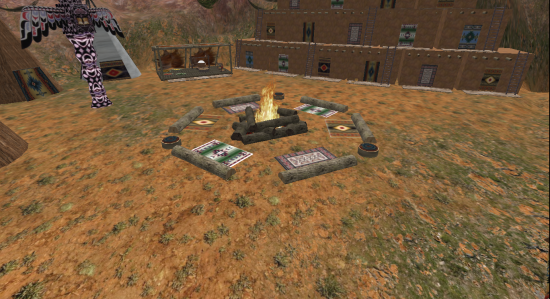Developers released a new version of OpenSim this week, with support for group management of land, the ability to offer teleports to other avatars, and other minor improvements and bug fixes.
Many OpenSim users would already have seen these features on OSGrid, the Diva Distro, and other grids running the experimental versions of OpenSim.
Other grids, including the business and education-focused ReactionGrid, please a premium on stability and wait for official releases and test extensively before rolling out new functionality.
ReactionGrid is “testing this release hard,” said ReactionGrid CTO Chris Hart in a Twitter note yesterday. “Would love a stable migration for ReactionGrid.”
The grid is currently using the 0.6.6 release of OpenSim, Hart told Hypergrid Business, the most recent stable release of the platform.
“They’re a little conservative,” said OpenSim core developer Justin Clark-Casey. Using the latest release of software can be risky, he said, and grids like ReactionGrid wait for new features to be thoroughly tested and proved stable before they roll them out to their users.
“They want to be providing a good service to their clients,” he told Hypergrid Business.
Not all clients have appreciated ReactionGrid’s focus on stability.
As we wrote earlier, Wayfinder Wishbringer of the Elf Clan Social Network, was frustrated with the lack of progress on ReactionGrid.
“Elf Clan needs to go where progress is being made,†he said last week, announcing his group’s move from OpenSim-based ReactionGrid to InWorldz, which has recently started doing its own development.

Other new features in this week’s release are some building blocks of vehicle physics.
“Vehicle physics themselves have not been implemented,” Clark-Casey said, since some functions remain to be rolled out.
The latest release also upgrades the export functionality, so that the region files — known as OARs — include water heights, terrain textures, and other region settings.
This 0.6.9 release does not include the results of the recent refactoring changes, which include significant improvements to the underlying infrastructure of OpenSim. Those are currently only available in the cutting-edge, experimental versions of Opensim, but will be included in the upcoming 0.7 official release.
“The refactoring needs to undergo a good period of testing and debugging,” said Clark-Casey. “It does change the database tables quite a bit.”
The switch to 0.7 will also require extra work on the part of grid owners who upgrade, he said.
“A lot of the Web front ends out there got kind of tied into the existing database schemas,” he said. “There are going to be considerable changes in configuration.”
The other big change in the upcoming 0.7 release is added security for hypergrid teleports, which allow users to teleport from one grid to another with their avatars, appearance — even access to their inventories.
There have been no reported instances of this happening, but it’s possible for hackers to set up rogue grids and steal inventory items from visiting avatars. As a result, some grids have been hesitant about enabling hypergrid teleports for their users.
Most major public grids — including OSGrid and ReactionGrid — are hypergrid-enabled, however, and the number is growing steadily. At Wilder Westen, for example, a Wild West-themed grid based in Germany, half of all visitors currently arrive over the hypergrid, said grid owner Kai Ludwig.
Content theft via the hypergrid is currently a theoretical concern, said Ludwig, who also owns and runs the Open Neuland grid, which is not on the hypergrid.
“If you wish to hack or steal content, there are much easier ways,” he said. Hackers with the technical skills to set up their own grids, wait for visitors, and hijack their inventories have many other options, he said, which are much faster and more effective. He provided some examples, which we’re not going to list here, to avoid giving anybody any ideas.
However, the security hole does exist and, as the hypergrid grows, eventually people will start to exploit it, he said.

According to Crista Lopes, professor of informatics at the University of California, Irvine and inventor of the hypergrid, full hypergrid security will only come with Hypergrid 2.0, which requires changes to the viewer software. But we’ll see some security improvements before then, she added.
“Release 0.7 will have the reasonably secure Hypergrid 1.5,” she told Hypergrid Business.
Lopes declined to give a release date for 0.7.
Clark-Casey also couldn’t provide an estimated arrival time for 0.7, since the testing and debugging work is being conducted by volunteer open source developers.
“It all depends on how fast people work,” he said. “I still think we’re talking several months, myself.”
The 0.7 release will be a significant turning point for OpenSim, he said. In addition to the structural changes to the underlying OpenSim data organization, there will be more of an emphasis on stability, instead of rolling out as many new features as quickly as possible.
“My personal hope is that we do start to see more reliable releases,” he said.
For more details about the the ongoing changes to OpenSim, Clark-Casey posts weekly progress updates on his blog.
- International singers gather on Alternate Metaverse Grid for first annual International Day - April 15, 2024
- OpenSim hits new land, user highs - April 15, 2024
- Wolf Territories rolls out speech-to-text to help the hearing impaired - April 15, 2024
